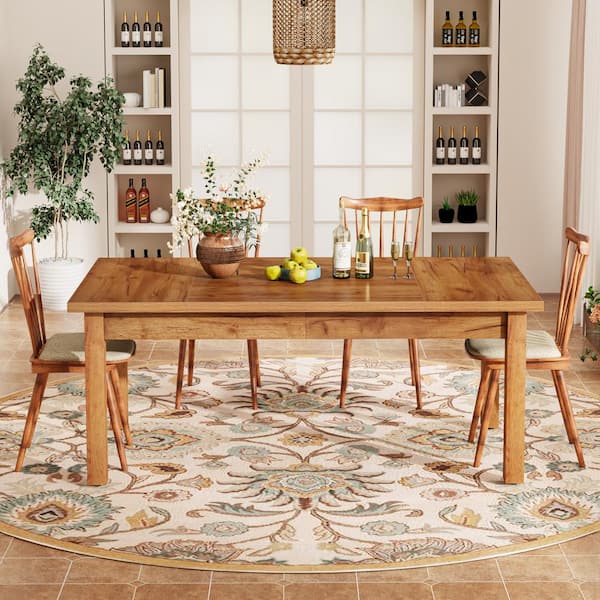The Ultimate Guide to Picking Durable Dining Room Table Legs
The Ultimate Guide to Picking Durable Dining Room Table Legs
Blog Article
An In-depth Take A Look At Dining Table Leg Styles: Discovering the Suitable Match
Selecting the best eating table leg design is vital for both visual appeal and practical functionality. Conventional 4 legs provide timeless sophistication and security, while the stand base provides boosted legroom and a modern look. For those with larger tables, trestle legs make sure sturdy assistance, whereas hairpin legs introduce a mid-century modern-day ambiance with their minimal design. The x-shaped legs mix contemporary design with improved stability. Each of these choices brings unique advantages, making the selection greater than simply an issue of preference. Discover additionally to find which design perfectly matches your eating space and way of living.
Conventional Four Legs
Amongst the numerous types of dining table leg styles, the conventional four-leg style continues to be a timeless choice for several families. Four legs provide balanced assistance, guaranteeing the table stays steady and capable of bearing considerable weight (dining room table legs).
From an aesthetic point of view, the conventional four-leg design can be quickly adapted to numerous indoor styles. Whether crafted from wood, metal, or a mix of materials, these legs can be elaborately sculpted, streamlined and minimalistic, or anything in between. Their convenience enables them to match both rustic and contemporary setups seamlessly.
In addition, the straightforward framework of the four-leg style helps with ease of activity and positioning within a space. Unlike more facility bases, this design lessens blockages, providing adequate legroom for diners. In recap, the typical four-leg table leg style marries enduring sophistication with functional performance, making it a sharp choice for those looking for both kind and feature in their dining furniture.
Pedestal Base
Typically commemorated for its elegant and space-efficient layout, the pedestal base is a prominent alternative to the traditional four-leg setup in eating table leg styles. Without edge legs, diners are managed better liberty of movement, making it an optimal choice for round and oblong tables that promote more intimate and inclusive celebrations.
The main column itself provides a canvas for detailed designs and creative expressions, adding a component of visual passion underneath the table. In summary, the pedestal base integrates performance with style, making it an improved and useful option for diverse eating environments.
Trestle Legs
Trestle legs offer a robust and timeless foundation for eating tables, identified by their horizontal cross-bracing and tough assistance light beams. Originating from middle ages times, this layout has actually developed yet maintained its important structure, making it a perennial fave in both conventional and modern setups. The central trestle beam, typically sustained by two or even more upright messages, offers outstanding security, allowing for bigger table sizes without the requirement for additional legs.
A significant advantage of trestle leg tables is the sufficient legroom they use. Unlike tables with four edge legs, the absence of blockages at the table's sides gives unobstructed space for chairs and diners, improving convenience and availability. This makes trestle tables excellent for accommodating bigger celebrations, whether in an eating space or a banquet hall.
The visual flexibility of trestle legs is significant. Readily available in a range of products such as wood, metal, and composite, they can be finished to complement a our website wide variety of interior designs. From rustic farmhouse to smooth modern styles, trestle legs can be customized to fit specific preferences. Their long-lasting appeal and practical advantages make trestle legs an engaging choice for those looking for both style and functionality in their table.
Hairpin Legs

The allure of hairpin legs hinges on their simpleness and flexibility - dining room table legs. Offered in a variety of materials, including steel and brass, they can be completed in various shades to match different interior styles. Whether matched with a rustic wooden tabletop or a contemporary glass surface area, hairpin legs easily mix performance with a touch of classic beauty
Longevity is an additional over at this website remarkable attribute of barrette legs. In spite of their delicate look, these legs are engineered to birth substantial weight, guaranteeing the eating table continues to be stable and protected. In addition, they are reasonably easy to install, making them a popular option for DIY lovers and specialist furnishings manufacturers alike.
X-Shaped Legs

Constructed from materials such as steel, wood, or a combination of both, X-shaped legs can be customized to match numerous style preferences. Steel legs usually provide a smooth and commercial feel, perfect for loft-style apartments and modern eating spaces. On the other hand, wooden X-shaped legs supply a warmer, more rustic appeal, appropriate for farmhouse or diverse insides. The convenience in materials permits property owners to tailor their eating tables to better fit their total layout system.
Furthermore, the design behind X-shaped legs ensures also weight distribution, lessening the threat of wobbling and boosting sturdiness. This makes them particularly well-suited for larger dining tables that call for additional support. Fundamentally, X-shaped legs mix practical engineering with modern-day looks, making them a classic selection for diverse eating atmospheres.
Conclusion
A thorough understanding of table leg styles discloses the distinctive attributes and benefits of each design. Typical 4 legs provide security and classic charm, while pedestal bases supply legroom and a structured look. Trestle legs make sure robust support for bigger tables, and barrette legs introduce a mid-century modern-day visual. X-shaped legs combine modern click here now design with improved security. Picking the proper leg design ensures both functional and visual fulfillment in any kind of dining space.
Report this page